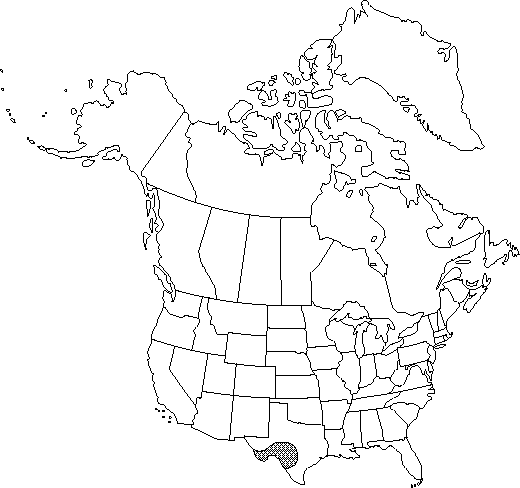Aristolochia coryi
J. Arnold Arbor. 21: 256. 1940.
Herbs, procumbent, to 0.4 m. Young stem smooth, glabrous or puberulent. Leaves: petiole 1-3 cm. Leaf blade deltate, 3-5 × 3-5 cm, base cordate, sinus depth 1-2 cm, apex acute; surfaces abaxially puberulent; venation palmate. Inflorescences on new growth, axillary, solitary flowers; peduncle bracteolate, 1-4 cm; bracteoles lanceolate, to 5 mm. Flowers: calyx yellow-green or yellow-brown, curved; utricle horizontal, ovoid to obconic, 0.8 × 0.6 cm; syrinx present, funnel-shaped, 1-2 mm; tube curved, cylindric, 1-3 × 0.3 cm; annulus absent; limb brown with purple spots, 1-lobed, lobe strap-shaped, 1.5-2 × 1.5 cm, glabrous; gynostemium 5-lobed, crown-shaped, 1-4 mm; anthers 5; ovary 5-locular, 1-4 cm. Capsule globose, 1.2 × 1-3 cm, dehiscence basipetal; valves 5; septa entire, not attached to valves. Seeds flat, triangular, 0.5 × 0.6 cm.
Phenology: Flowering late spring–summer.
Habitat: Rocky slopes, especially on limestone, occasionally river bottoms
Elevation: 0–600 m
Discussion
Selected References
None.
